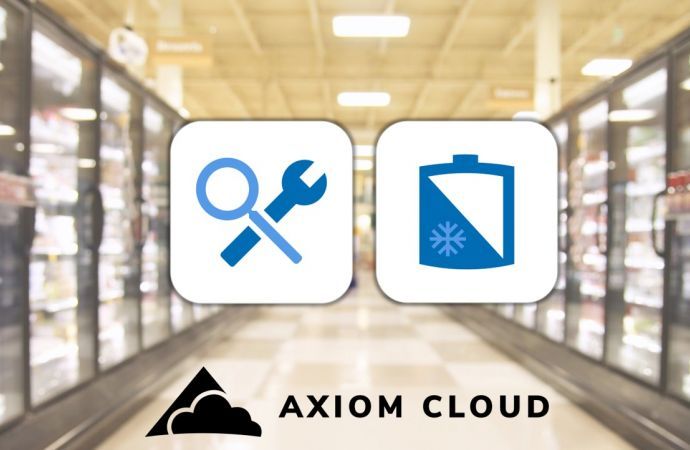A webinar hosted by the U.S. Environmental Protection Agency’s GreenChill Partnership on November 1, reviewed 4 market-ready solutions to further improve efficiency in warm climates of CO2 booster systems.
_1478175680.png)
Scott Martin, Director of Sustainable Technologies, Refrigeration Systems Division of Hillphoenix
Adiabatic gas coolers and parallel compression technologies, followed by ejectors and high-pressure subcoolers, stand out as the most promising solutions to improve the efficiency of CO2 systems in warm climates, according to Hillphoenix’s expert Scott Martin.
Martin, Director of Sustainable Technologies, Refrigeration Systems Division at Hillphoenix, was the guest speaker of a webinar focusing on the biggest challenge for CO2 refrigeration systems, namely their efficiencyin high ambient temperature conditions.
Adiabatic gas coolers
Martin highlighted adiabatic gas coolers as a leading solution. This option replaces the standard air-cooled gas cooler and allows for “substantial peak savings in the summer, when all of the medium temperature compressors have to be online, increasing the peak power. One of the drawbacks of the CO2 booster system in warm climate is the peak power requirement on a hot summer day,” Martin remarked.
Dry adiabatic pads can be employed in cooler weather, where wet to pre-cool the air are used in warmer weather, “as wet bulb temperatures can be about 20°F (6°C) cooler than the dry bulbs, […] this is a big energy impact for the booster system operation” Martin commented.
Peak savings for adiabatic gas coolers are estimated to be about 20-30% compared to standard CO2 systems, with annual savings of 8-12%. However initial costs are also a bit higher.
Martin gave an example of a BAC adiabatic gas cooler installed two years ago in Atlanta, Georgia, USA. He explained that as the summer of 2015 was rather mild, they only ran the supercritical function for a bit more than an hour. And although the summer of 2016 was a much warmer one, “the supercritical function mode was on for only 45-50 hours compared to an air cooled system where there would be thousands of hours of transcritical operations, which translates to big savings as this system keeps subcritical for most of the year” Martin stated.
Parallel compression
“For those who have been around a while -this is a ‘high-end satellite compressor’” Martin noted, “this system runs and processes flash gas in higher suction, which is more efficient than processing it by the medium temperature suction.”
Parallel compression is achieved through an added heat exchanger and dedicating a medium temperature compressor to process the gas during hot summer days.
The peak savings are about 12-20% and annual savings are 6-8%. This system offers a lower first cost alternative to adiabatic coolers. In Europe, Hillphoenix’s sister company Advansor currently has over 125 installations.
A long-term, viable solution with energy and cost savings
“Competence level is building” explained Martin, “people are realizing that [CO2 systems in supermarket applications] is a good, long-term investment. For the future there will not be any further refrigerant changes needed down the road, especially with GWP limits keep coming down.”
Martin said that the technology is up and coming, becoming more mainstream. He highlighted that they now have more standardized, pre-designed applications, where they can showcase the customers different system options available to them.
Utilities
Answering a question on whether the electric utilities are interested in providing incentives, Martin replied “Yes, definitely yes. We have been partnering with retailers to help them get the incentives money, especially to help offset the first cost of the application.” He added that they also provide access to a modeling software where they show the different energy consumption in different applications in various climate zones, showing the energy savings in peak power cost in the grid.
Technology solutions readily available, together with incentives such as the ones provided by utilities, may lead to a wider deployment of CO2 systems in warm weather conditions.
Webinar link: https://epawebconferencing.acms.com/p1yjk9dmkqp/
Martin, Director of Sustainable Technologies, Refrigeration Systems Division at Hillphoenix, was the guest speaker of a webinar focusing on the biggest challenge for CO2 refrigeration systems, namely their efficiencyin high ambient temperature conditions.
People are realizing that [CO2 systems in supermarket applications] is a good, long-term investment. For the future, there will not be any further refrigerant changes needed down the road, especially with GWP limits keep coming down.”
- Scott Martin, Hillphoenix
Martin highlighted adiabatic gas coolers as a leading solution. This option replaces the standard air-cooled gas cooler and allows for “substantial peak savings in the summer, when all of the medium temperature compressors have to be online, increasing the peak power. One of the drawbacks of the CO2 booster system in warm climate is the peak power requirement on a hot summer day,” Martin remarked.
Dry adiabatic pads can be employed in cooler weather, where wet to pre-cool the air are used in warmer weather, “as wet bulb temperatures can be about 20°F (6°C) cooler than the dry bulbs, […] this is a big energy impact for the booster system operation” Martin commented.
Peak savings for adiabatic gas coolers are estimated to be about 20-30% compared to standard CO2 systems, with annual savings of 8-12%. However initial costs are also a bit higher.
Martin gave an example of a BAC adiabatic gas cooler installed two years ago in Atlanta, Georgia, USA. He explained that as the summer of 2015 was rather mild, they only ran the supercritical function for a bit more than an hour. And although the summer of 2016 was a much warmer one, “the supercritical function mode was on for only 45-50 hours compared to an air cooled system where there would be thousands of hours of transcritical operations, which translates to big savings as this system keeps subcritical for most of the year” Martin stated.
Parallel compression
“For those who have been around a while -this is a ‘high-end satellite compressor’” Martin noted, “this system runs and processes flash gas in higher suction, which is more efficient than processing it by the medium temperature suction.”
Parallel compression is achieved through an added heat exchanger and dedicating a medium temperature compressor to process the gas during hot summer days.
The peak savings are about 12-20% and annual savings are 6-8%. This system offers a lower first cost alternative to adiabatic coolers. In Europe, Hillphoenix’s sister company Advansor currently has over 125 installations.
A long-term, viable solution with energy and cost savings
“Competence level is building” explained Martin, “people are realizing that [CO2 systems in supermarket applications] is a good, long-term investment. For the future there will not be any further refrigerant changes needed down the road, especially with GWP limits keep coming down.”
Martin said that the technology is up and coming, becoming more mainstream. He highlighted that they now have more standardized, pre-designed applications, where they can showcase the customers different system options available to them.
Utilities
Answering a question on whether the electric utilities are interested in providing incentives, Martin replied “Yes, definitely yes. We have been partnering with retailers to help them get the incentives money, especially to help offset the first cost of the application.” He added that they also provide access to a modeling software where they show the different energy consumption in different applications in various climate zones, showing the energy savings in peak power cost in the grid.
Technology solutions readily available, together with incentives such as the ones provided by utilities, may lead to a wider deployment of CO2 systems in warm weather conditions.
Webinar link: https://epawebconferencing.acms.com/p1yjk9dmkqp/
Related stories


